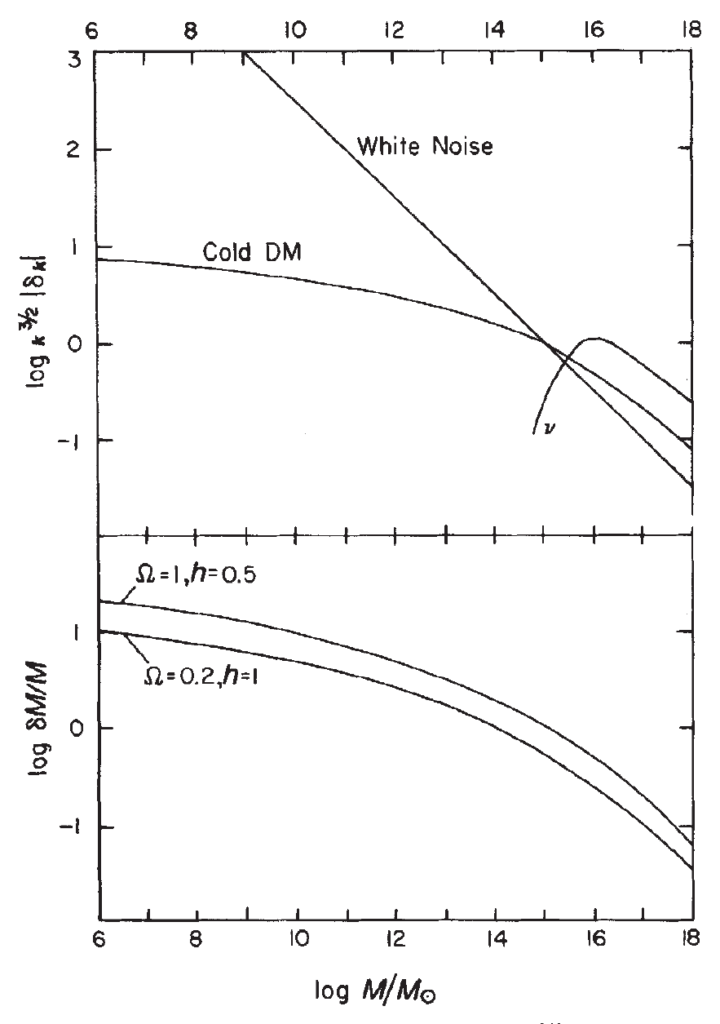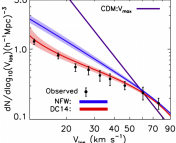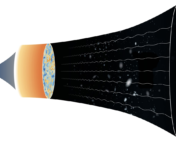
Today’s guest author is Islam Khan, who is currently a Physics PhD Candidate at Washington State University. His interest is in the field of particle cosmology and he is working on developing a novel scalar field dark energy model where the energy density of the inflaton field that drove inflation somehow survived until recent times to behave as dark energy. When not uncovering the secrets of the universe, Islam is usually traveling, playing fingerstyle guitar, or playing soccer.
_______________________________________________________________________
Title: Formation of galaxies and large-scale structure with cold dark matter
Authors: George R. Blumenthal, S. M. Faber, Joel R. Primack & Martin J. Rees
First Author’s Institution: Lick Observatory, Board of Studies in Astronomy and Astrophysics, University of California, Santa Cruz, California 95064, USA
Status: Published in Nature, closed access
Thanks to Vera Rubin, the “missing” baryonic matter, now known as Dark Matter (DM), was discovered in the late 1970s by observing rotation curves of galaxies. These rotation velocities did not decrease as rapidly with increasing radius of the galaxies as predicted based on the light coming from them. DM was proposed to make up for the missing mass that is responsible for these flat rotation curves. While it is still unknown what DM is, we now know it accounts for about 24% of the universe and it played a big part in the formation of structures in the universe such as stars, galaxies, galaxy clusters, and superclusters. By 1984, it was already evident that the dark matter in our universe has at least ten times more mass compared to that of baryonic (visible) matter. Dark matter was hypothesized to be hot, cold or warm. Temperature of particles is directly correlated to their speed, and as the names suggest, the hotter the DM, the faster these particles are moving. Why do we mostly hear about cold dark matter (CDM) and not the other types? You’ve guessed it! It’s because CDM prevailed and today’s paper goes to great lengths to convince you that the universe is dominated by CDM.
Dark Matter: Hot or Cold?
There were already several dark matter candidates in 1984, even though the presence of this “non-luminous” matter was taken seriously only a few years earlier. The first candidate was the neutrino particles associated with hot dark matter (HDM) which (wrongly) predict the formation of superclusters before the formation of galaxies or stars. Warm DM predicts the first formed structures to have the mass scale of galaxies, meaning galaxies would be the first to form followed by stars, which also doesn’t match observations. The best match with the observed universe is obtained when the first structures have a smaller scale compared to that of galaxies and this is predicted by CDM models. Both HDM and CDM scenarios can predict structure formation in the supercluster scale. However, the superclusters are predicted to be too flattened (or elongated) in the HDM picture with a simple cosmic web structure. We do not observe this extent of flatness at supercluster scales. The observed structure is rather complex and rich spanning a broad range of sizes which is consistent with CDM predictions.
Possible Candidates
By far, the most popular CDM candidate to this day is the axion particles; they are hypothetical light particles that were first introduced for solving a puzzle in particle physics commonly known as the strong CP problem. Today, experiments have been developed to detect these exotic particles with no luck yet. Photinos are the partner of photons predicted by supersymmetry (you may have heard of SUSY which is short for supersymmetry). The breaking of supersymmetry results in photinos to have a very light mass (unlike photons which are massless) and they could be behaving as dark matter in the present day universe assuming they are stable enough. Another possible dark matter candidate could be black holes. Many isolated black holes are spread throughout the universe, and being isolated, they are practically invisible to us. This makes it impossible to accurately estimate their total number. It comes as no surprise that black holes were considered a popular CDM candidate in the 1980’s.

More Evidence Dark Matter is Cold
Suppose a galaxy contains a lot more mass than what we observe from the light coming to us from it, which is the case for (possibly) all the galaxies that we have observed to date. The ratio of the mass in a galaxy and the light coming from it gives a useful measure of the DM content of a galaxy known as its mass-to-light ratio (M/L). We would predict the M/L of galaxies containing DM to be greater than 1, which is expected to increase as the mass scale (M) of the structures increase. This is exactly what we see when plotting M/L against M in Figure 1 (top). The total-to-luminous mass ratio (M/Mlum) of a galaxy is another useful quantity, defined as the ratio between the total mass of a galaxy and only the mass that is visible to us. This ratio being approximately constant in the M/Mlum against M plot (bottom) indicates that DM clumps together with visible structures in the universe such as galaxies and galaxy clusters. The larger the mass of the visible structure, the more DM clumps with it, keeping the M/Mlum ratio constant. DM is expected to clump together with galaxies in the CDM scenario.

Quantum fluctuations (particles popping in an out of existence) in the early universe amplified with the help of inflation are believed to be the seeds of all structures in the universe. Throughout the evolution of the universe, these fluctuations grow differently for each type of particle due to various factors such as gravitational forces, particle energies and interactions. The strength of these density fluctuations, the difference between the density in a particular scale and the average density of the universe, can be represented on a graph by plotting them as a function of scale (density power spectra). For the case of DM or baryons they are called matter power spectra. The present-day fluctuation power spectra for both CDM and neutrino (HDM) scenarios are shown in Figure 2. It can be seen from the top graph (of Figure 2) that the CDM scenario predicts structures to form at smaller length scales which then hierarchically merge to form larger structures (bottom up), whereas the HDM scenario predicts structures to form at large scales at first which then break down into smaller scales (top down). The neutrinos presently do not have fluctuations at small scales since they are able to escape the high density regions with their high velocities and dissolve the fluctuations present at those smaller scales. Observations heavily support the bottom up structure formation – triumph for CDM!
You may already be certain about the takeaway message of today’s paper: The universe is filled with about ten times more dark matter than visible matter. There are still several popular CDM candidates, but not knowing the identity of the CDM particles didn’t stop us from verifying that CDM correctly predicts the observed properties of structures at all scales, as opposed to HDM or WDM scenarios. CDM was just starting to gain attention worldwide back in the 80s. Fast-forward three decades and we still know very little about it (or them). It is remarkable that its existence is now almost taken for granted.




